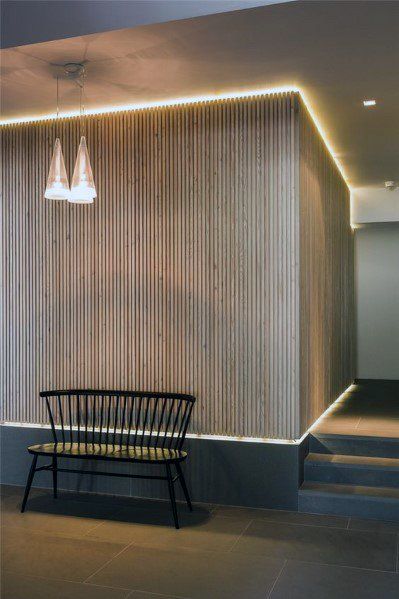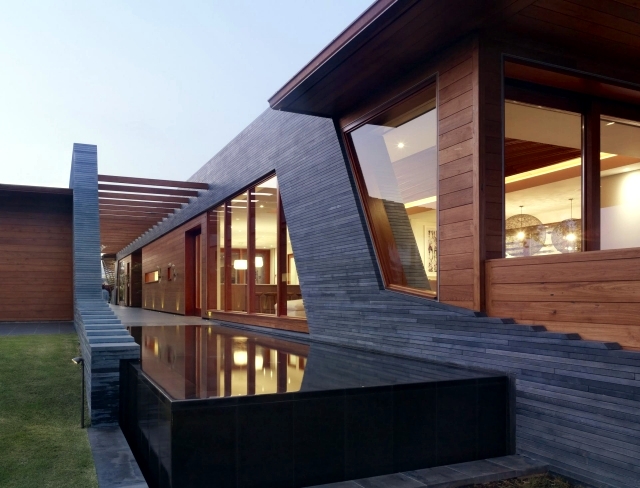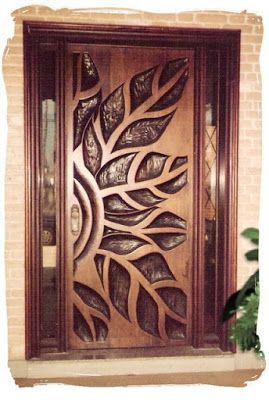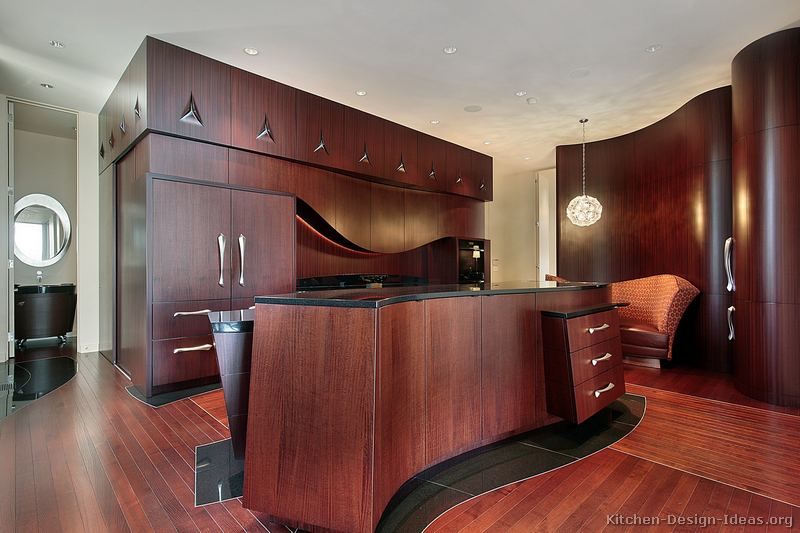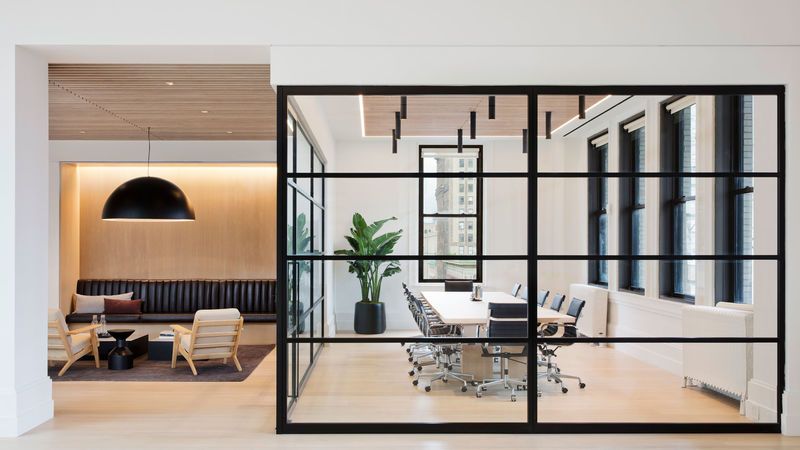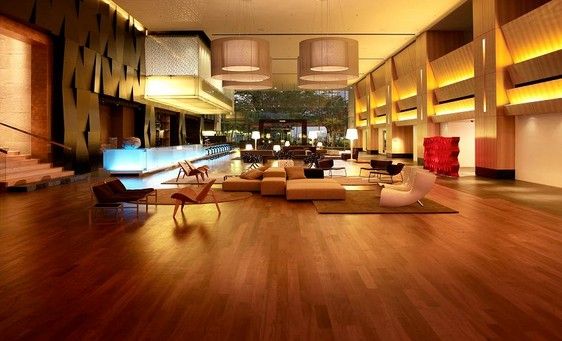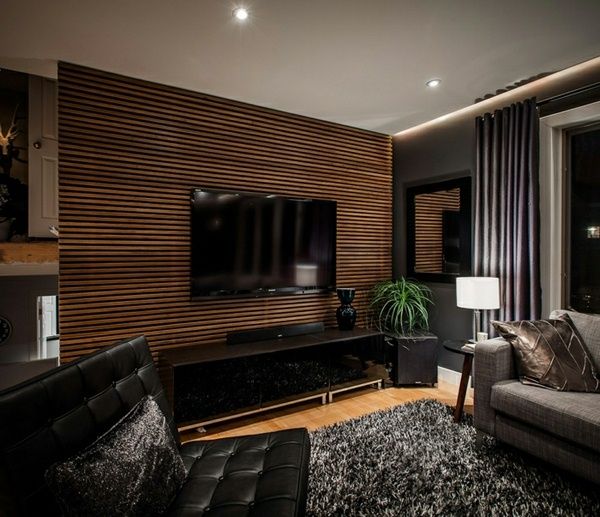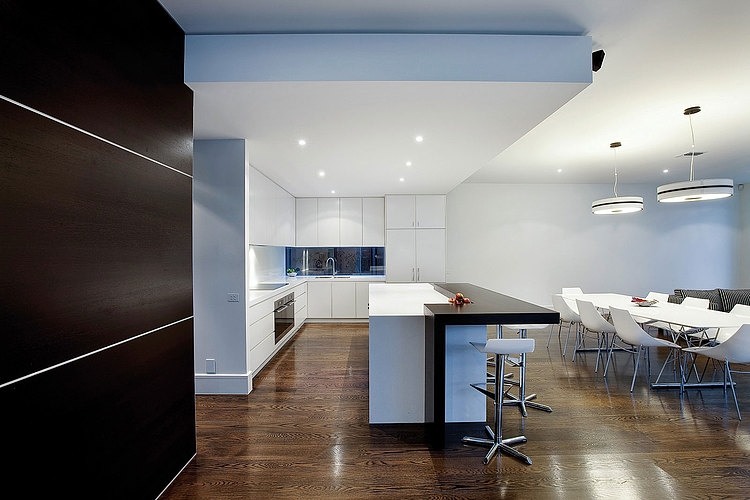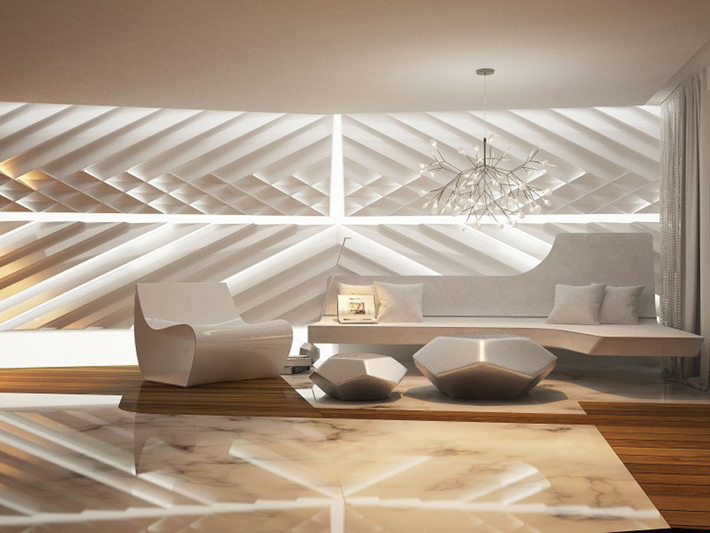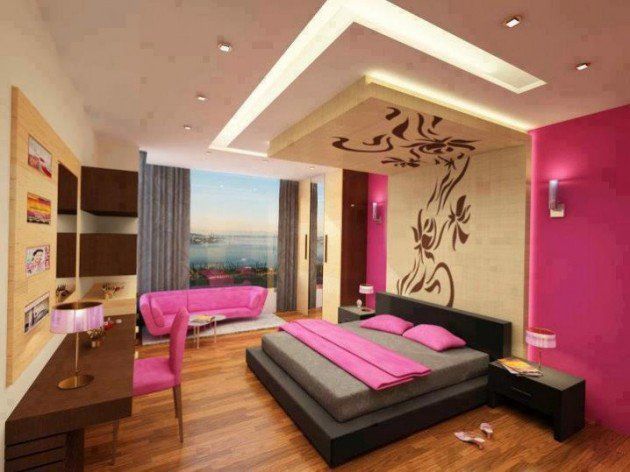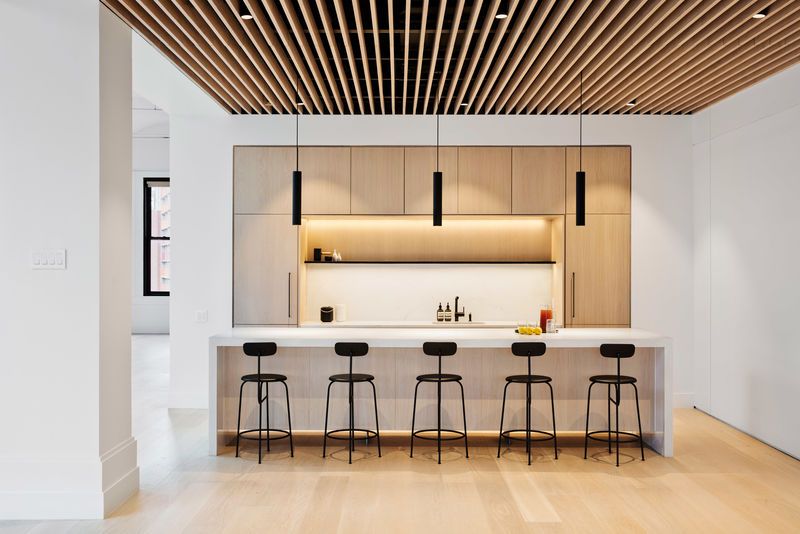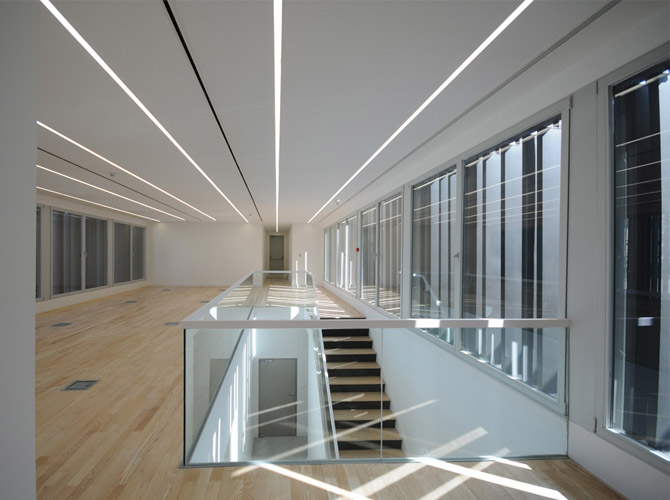Ultra-modern interior – with wood!
As a design philosophy, the ultra-modern method presents a unique set of challenges for both the architect and the interior architect. To create a building that seems to both belong to the space it lives in and meets the owner’s requirements, careful use of shape, line, texture and material is required. Take that challenge into the kitchen and you face the complicated complexity of creating both function and form in a room that will carry the mood of the dinner needs and is home to many a budding chef (who does not kindly take bad design).
Clean lines and sharp minimal use of space are just part of this picture. There must be space for utensils and appliances, while areas for cooking and serving must conform to the overall design. Material, as is the case with all furnishings, will make a big difference in how the eye assesses the light. How light works with the surfaces can have a significant effect on the important flow from one line to the next.
Where in this balance is there room for wood? With the potential for grain to take the carefully placed environment “less is more” and create confusion, wood must be used with caution. I would like to take some excellent examples of where wood has been used in ultra-modern design and choose why it works.
Old style but still ultra modern
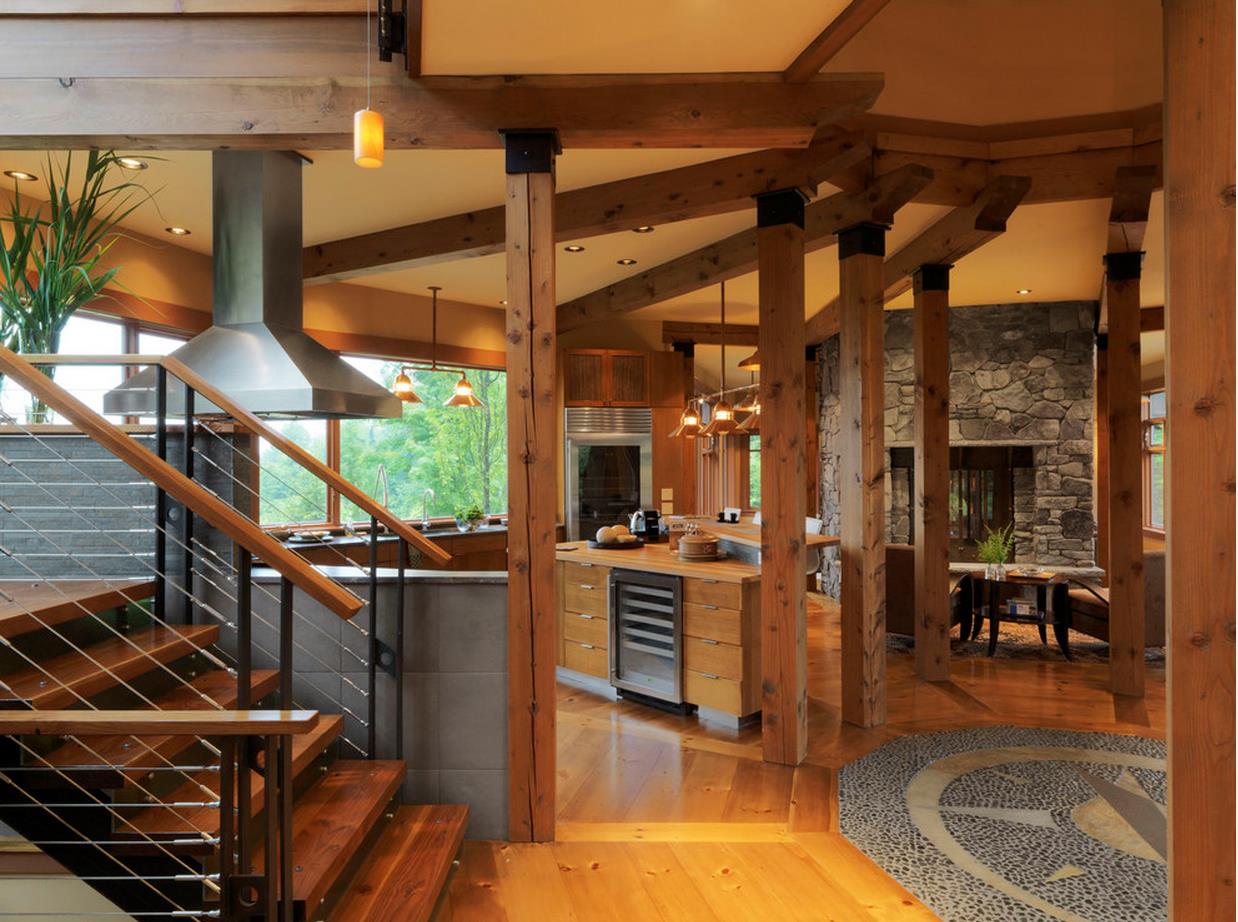
The wood here works with both the style it loses and the choice of a very knotted timber to make shapeless, seemingly random, patterns. A segmented feeling from how the rays close in the middle gives the whole space and the island unit gives the room a work zone. The wooden floor retains the old shaking feel while the exposed stone work gives a fantastic change of patterns and strips in the slate plate used in the front.
Polished perfection
Image courtesy of Houzz.
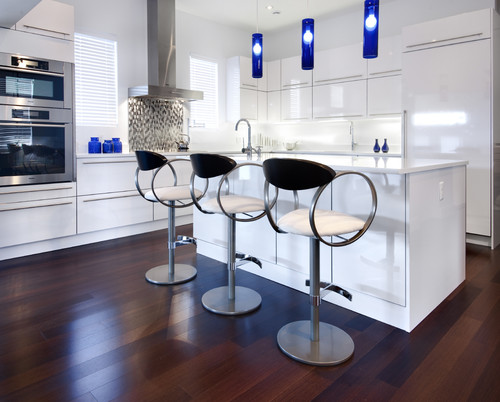
Capsules in a monochromatic design, here is the floor that is the star of the show. The dark wood provides a polished depth to ensure that all light in the room does not risk overwhelming the eye. Blue glass accents in the lighting only add a touch of color while the patterned fireplace table creates a break in the white surfaces.
Use wood as a unique detail
Here, with a raised peak in Iroko, it is the wood that takes the back seat and provides an outstanding detail. The change of tone from artificial to nature works well.
Source: Bordercraft
Sometimes it is the tone of wood and how it catches the eye, which proves to be useful in a design. By lifting it from the primary workspace, this Iroko wooden top works almost like a shade oraccent to the main white bench.
A material, many uses
Wood can then be used in many ways in ultra-modern design. As a primary surface on the floor or ceiling, wood-based materials can direct light and the eye to other details while softening high-gloss surfaces that reflect light. It can be used to elicit a particular design philosophy from another era while being flexible enough to cut into whatever shape is needed to maintain the necessary lines and ultra-modern design philosophy. In this way, wood can be made the center of attention, or it can melt more in the background to give other surfaces the chance to emerge.
For those looking for the ultra-modern look in the kitchen, wood can lend itself to many different shapes and looks, along with a timeless wealth and depth to almost any other surface or material.
About the author: Jon Buck has been Managing Director at Bordercraftsince 1996. During this time he has overseen projects from a single drawer front for a local customer to a complete oak panel office for a multinational company in Japan. In his spare time, Jon is an avid runner and loves travel and red wine in equal measure. You can connect to Bordercraft on Facebook.
